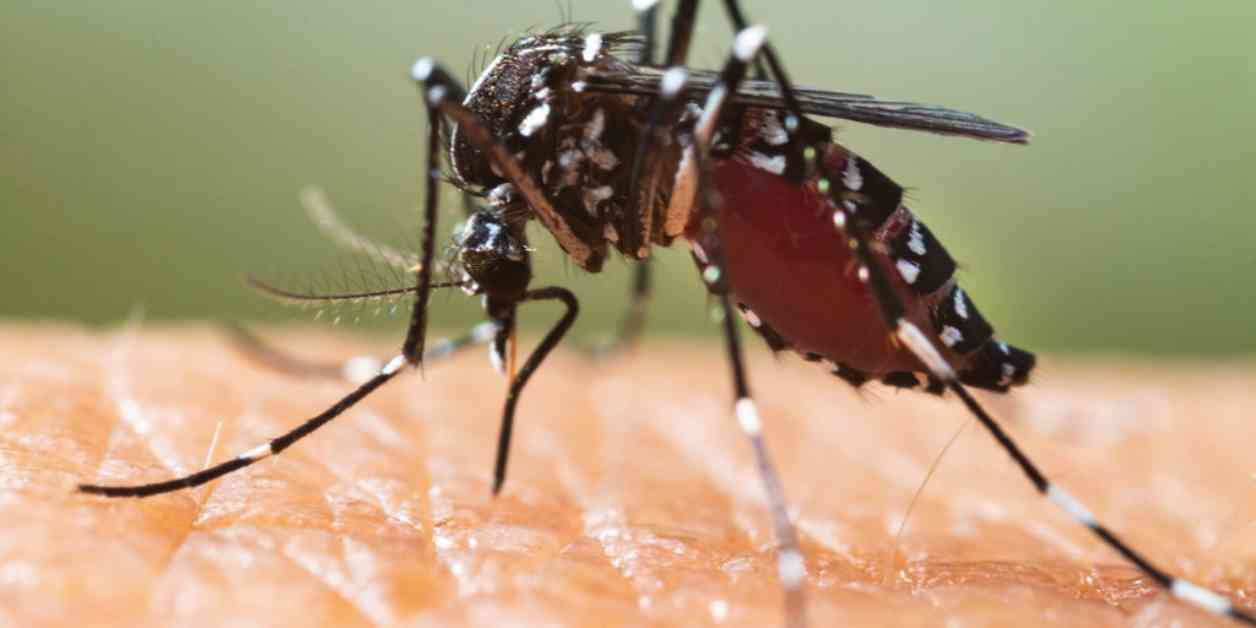A rare and potentially deadly mosquito-borne disease has raised concerns in the Northeastern United States, particularly in New Hampshire. The recent death of a man from Hampstead, New Hampshire, due to Eastern equine encephalitis (EEE) has brought this issue to the forefront. The New Hampshire Department of Health and Human Services (DHHS) confirmed that the man was hospitalized for severe central nervous system disease and ultimately succumbed to the illness. The tragic incident serves as a stark reminder of the dangers posed by EEE.
Unfolding Events in New Hampshire
The case in New Hampshire is not an isolated incident. Another man, Joe Casey, is currently fighting for his life in the ICU after contracting three mosquito-borne illnesses, including EEE. These alarming developments highlight the urgency of addressing the spread of the virus in the region. The gravity of the situation prompted the DHHS to issue a statement addressing the severity of EEE and the need for heightened vigilance.
The Impact in Massachusetts
Neighboring Massachusetts has also felt the impact of EEE, with four towns—Douglas, Oxford, Sutton, and Webster—implementing a voluntary evening lockdown to prevent further spread of the virus. The state’s Department of Public Health (DPH) confirmed the first human case of EEE in Worcester County, affecting an elderly man in Oxford. These measures underscore the urgency of containing the virus and protecting vulnerable populations from its potentially devastating effects.
Epidemiological Trends
The Centers for Disease Control and Prevention (CDC) reported a total of four EEE cases in 2024, although this data is subject to change. In recent years, there has been a fluctuating pattern in the number of reported cases, with seven cases in 2023, one case in 2022, five in 2021, and 13 in 2020. The spike in 2019, with 38 cases reported, raised concerns about the increasing prevalence of EEE in the region. These epidemiological trends underscore the need for proactive measures to address the spread of the virus.
Understanding Eastern Equine Encephalitis
EEE is caused by a virus transmitted through the bite of an infected mosquito. Described as a rare but serious disease by the CDC, EEE primarily affects animals such as large mammals, birds, reptiles, and amphibians. While human cases are relatively rare, the severity of the illness and its potential fatality underscore the importance of preventive measures. The limited ability of humans and other animals to spread the virus to mosquitoes further emphasizes the need for targeted interventions to curb its transmission.
Factors Contributing to the Uptick
The emergence of EEE in the U.S. highlights the potential impact of climate change on the spread of mosquito-borne diseases. Dr. Edward Liu, chief of infectious diseases at Hackensack Meridian Jersey Shore University Medical Center, emphasized the role of warming seasons in creating conducive conditions for mosquito breeding. Factors such as heavy rains leading to stagnant water provide ideal breeding grounds for mosquitoes, contributing to the increased prevalence of diseases like EEE. As these environmental factors continue to evolve, the risk of mosquito-borne illnesses may rise, necessitating proactive strategies to mitigate their impact.
Expert Perspectives on EEE
Dr. Marc Siegel, senior medical analyst for Fox News, and clinical professor of medicine at NYU Langone Medical Center, highlighted the rarity of EEE while acknowledging its potential severity. He emphasized the neurological complications and fatality associated with the virus, underscoring the need for heightened awareness and preventive measures. Dr. Eyal Leshem, director of the Center for Travel Medicine and Tropical Diseases at Sheba Medical Center in Israel, emphasized the challenges in treating EEE due to the lack of specific antiviral medications. These expert perspectives shed light on the complexities of managing EEE and the importance of early detection and intervention.
Symptoms and Clinical Manifestations
Common symptoms of EEE include fever, vomiting, diarrhea, headache, stiff neck, seizures, behavioral changes, and drowsiness. These manifestations typically appear five to 10 days after being bitten by an infected mosquito. The severity of the disease can vary, with some patients experiencing neurological symptoms linked to inflammation in the brain or spinal cord. The lack of specific treatment options underscores the importance of early diagnosis and supportive care to manage symptoms and prevent complications.
Risk Factors and Vulnerable Populations
Older adults and individuals with compromised immune systems are at higher risk for mosquito-borne encephalitis, including EEE. The potential for co-infections with other viral pathogens further complicates the clinical course of the disease. Dr. Liu highlighted the concern of mosquitoes carrying multiple pathogens, posing a greater threat to public health. As such, targeted interventions to protect vulnerable populations and prevent co-infections are crucial in mitigating the impact of EEE and other mosquito-borne diseases.
Preventive Measures and Public Health Strategies
Preventing mosquito bites remains the cornerstone of preventing EEE and other mosquito-borne illnesses. The CDC recommends using insect repellent, wearing protective clothing, and treating gear with permethrin to repel mosquitoes. Additionally, controlling mosquito populations indoors and outdoors can help reduce the risk of infection. Strategies such as using screens on windows and doors, utilizing air conditioning, and eliminating standing water where mosquitoes breed are essential in preventing the spread of EEE. Public health initiatives aimed at mosquito control and surveillance play a vital role in reducing the burden of mosquito-borne diseases in communities.
Conclusion
The recent cases of EEE in New Hampshire and Massachusetts underscore the ongoing threat posed by mosquito-borne diseases in the Northeastern United States. While EEE remains relatively rare, its potential severity and fatality highlight the importance of proactive measures to prevent its transmission. Expert insights and epidemiological trends provide valuable perspectives on addressing the challenges posed by EEE and other mosquito-borne illnesses. By raising awareness, implementing preventive strategies, and supporting public health initiatives, communities can work together to combat the spread of EEE and protect vulnerable populations from its devastating effects.

















